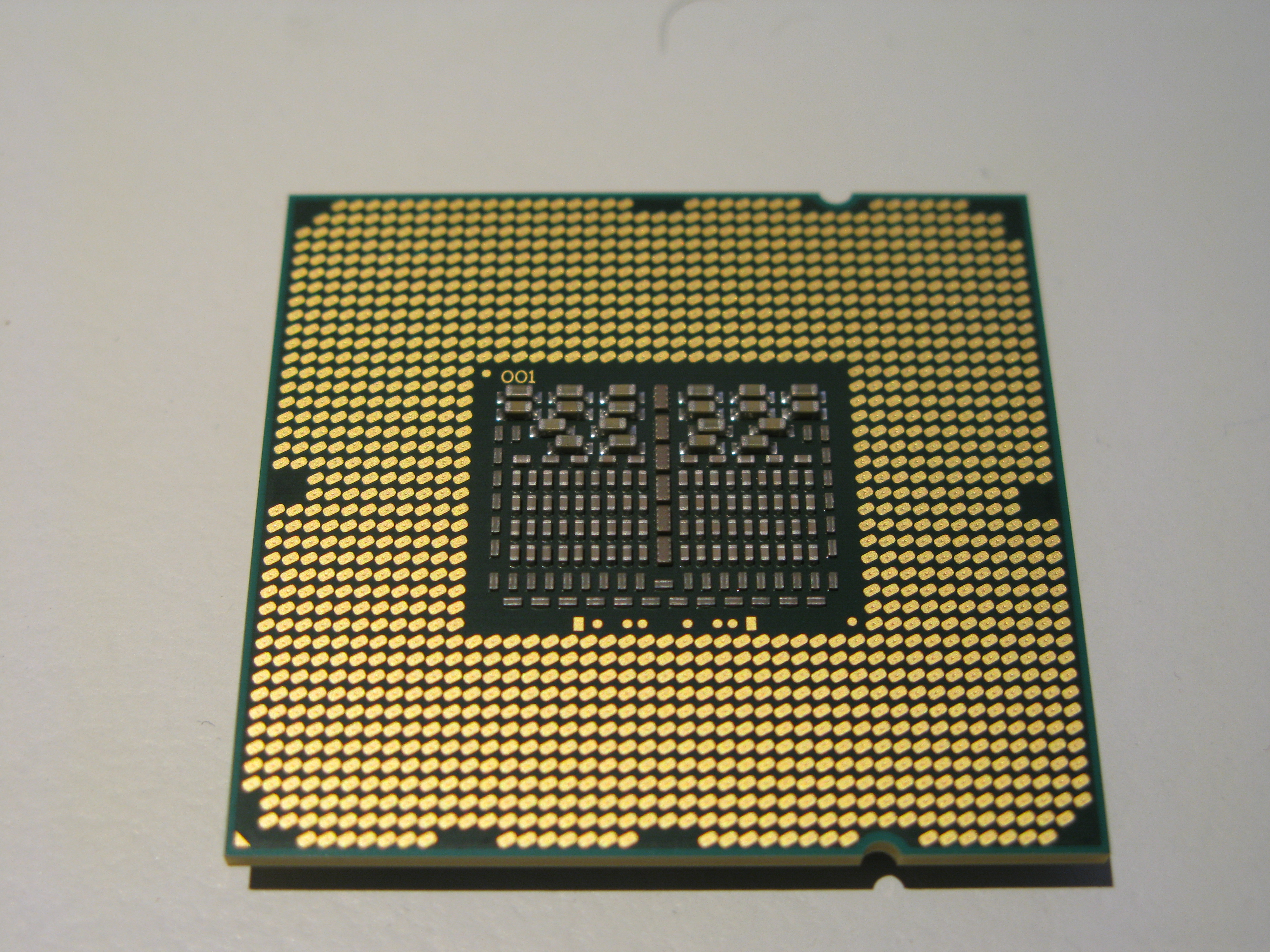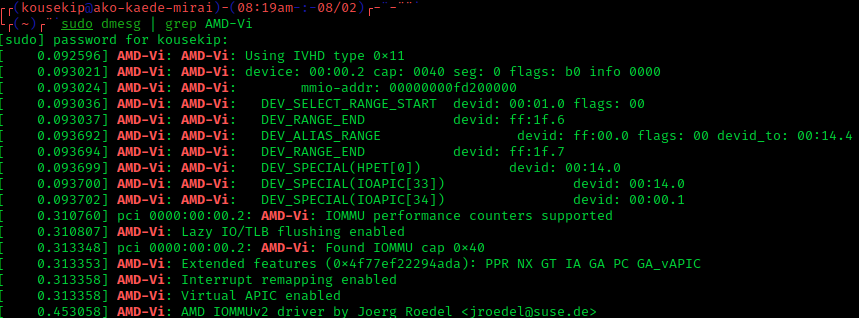|
Popek And Goldberg Virtualization Requirements
The Popek and Goldberg virtualization requirements are a set of conditions sufficient for a computer architecture to support system virtualization efficiently. They were introduced by Gerald J. Popek and Robert P. Goldberg in their 1974 article "Formal Requirements for Virtualizable Third Generation Architectures". Even though the requirements are derived under simplifying assumptions, they still represent a convenient way of determining whether a computer architecture supports efficient virtualization and provide guidelines for the design of virtualized computer architectures. VMM definition System virtual machines are capable of virtualizing a full set of hardware resources, including a processor (or processors), memory and storage resources and peripheral devices. A virtual machine monitor (VMM, also called hypervisor) is the piece of software that provides the abstraction of a virtual machine. There are three properties of interest when analyzing the environment created by a ... [...More Info...] [...Related Items...] OR: [Wikipedia] [Google] [Baidu] |
Full Virtualization
In computer science, virtualization is a modern technique developed in late 1990s and is different from simulation and emulation. Virtualization employs techniques used to create instances of an environment, as opposed to simulation, which models the environment; or emulation, which replicates the target environment such as certain kinds of virtual machine environments. Full virtualization requires that every salient feature of the hardware be reflected into one of several virtual machines – including the full instruction set, input/output operations, interrupts, memory access, and whatever other elements are used by the software that runs on the bare machine, and that is intended to run in a virtual machine. In such an environment, any software capable of execution on the raw hardware can be run in the virtual machine and, in particular, any operating systems. The obvious test of full virtualization is whether an operating system intended for stand-alone use can successful ... [...More Info...] [...Related Items...] OR: [Wikipedia] [Google] [Baidu] |
System/370
The IBM System/370 (S/370) is a model range of IBM mainframe computers announced on June 30, 1970, as the successors to the System/360 family. The series mostly maintains backward compatibility with the S/360, allowing an easy migration path for customers; this, plus improved performance, were the dominant themes of the product announcement. In September 1990, the System/370 line was replaced with the System/390. Evolution The original System/370 line was announced on June 30, 1970, with first customer shipment of the Models 155 and 165 planned for February 1971 and April 1971 respectively. The 155 first shipped in January 1971. System/370 underwent several architectural improvements during its roughly 20-year lifetime. The following features mentioned in Principles of Operation are either optional on S/360 but standard on S/370, introduced with S/370 or added to S/370 after announcement. *Branch and Save *Channel Indirect Data Addressing *Channel-Set Switching *Clear I/O *Co ... [...More Info...] [...Related Items...] OR: [Wikipedia] [Google] [Baidu] |
Shadow Page Tables
x86 virtualization is the use of hardware-assisted virtualization capabilities on an x86/x86-64 CPU. In the late 1990s x86 virtualization was achieved by complex software techniques, necessary to compensate for the processor's lack of hardware-assisted virtualization capabilities while attaining reasonable performance. In 2005 and 2006, both Intel (VT-x) and AMD ( AMD-V) introduced limited hardware virtualization support that allowed simpler virtualization software but offered very few speed benefits. Greater hardware support, which allowed substantial speed improvements, came with later processor models. Software-based virtualization The following discussion focuses only on virtualization of the x86 architecture protected mode. In protected mode the operating system kernel runs at a higher privilege such as ring 0, and applications at a lower privilege such as ring 3. In software-based virtualization, a host OS has direct access to hardware while the guest OSs have limited ac ... [...More Info...] [...Related Items...] OR: [Wikipedia] [Google] [Baidu] |
Emulator
In computing, an emulator is Computer hardware, hardware or software that enables one computer system (called the ''host'') to behave like another computer system (called the ''guest''). An emulator typically enables the host system to run software or use peripheral devices designed for the guest system. Emulation refers to the ability of a computer program in an electronic device to emulate (or imitate) another program or device. Many Printer (computing), printers, for example, are designed to emulate Hewlett-Packard, HP LaserJet printers because so much software is written for HP printers. If a non-HP printer emulates an HP printer, any software written for a real HP printer will also run in the non-HP printer emulation and produce equivalent printing. Since at least the 1990s, many video game enthusiasts and hobbyists have used emulators to play classic arcade games from the 1980s using the games' original 1980s machine code and data, which is interpreted by a current-era s ... [...More Info...] [...Related Items...] OR: [Wikipedia] [Google] [Baidu] |
PowerPC
PowerPC (with the backronym Performance Optimization With Enhanced RISC – Performance Computing, sometimes abbreviated as PPC) is a reduced instruction set computer (RISC) instruction set architecture (ISA) created by the 1991 Apple Inc., Apple–IBM–Motorola alliance, known as AIM alliance, AIM. PowerPC, as an evolving instruction set, has been named Power ISA since 2006, while the old name lives on as a trademark for some implementations of Power Architecture–based processors. PowerPC was the cornerstone of AIM's PReP and Common Hardware Reference Platform (CHRP) initiatives in the 1990s. Originally intended for personal computers, the architecture is well known for being used by Apple's Power Macintosh, PowerBook, iMac, iBook, eMac, Mac Mini, and Xserve lines from 1994 until 2005, when Mac transition to Intel processors, Apple migrated to Intel's x86. It has since become a niche in personal computers, but remains popular for embedded system, embedded and high-performanc ... [...More Info...] [...Related Items...] OR: [Wikipedia] [Google] [Baidu] |
UltraSPARC
The UltraSPARC is a microprocessor developed by Sun Microsystems and fabricated by Texas Instruments, introduced in mid-1995. It is the first microprocessor from Sun to implement the 64-bit SPARC V9 instruction set architecture (ISA). Marc Tremblay was a co-microarchitect. Microarchitecture The UltraSPARC is a four-issue superscalar microprocessor that executes instructions in in-order. It has a nine-stage integer pipeline. Functional units The execution units were simplified relative to the SuperSPARC to achieve higher clock frequencies - an example of a simplification is that the ALUs were not cascaded, unlike the SuperSPARC, to avoid restricting clock frequency. The integer register file has 32 64-bit entries. As the SPARC ISA uses register windows, of which the UltraSPARC has eight, the actual number of registers is 144. The register file has seven read and three write ports. The integer register file provides registers to two arithmetic logic units and the load/store ... [...More Info...] [...Related Items...] OR: [Wikipedia] [Google] [Baidu] |
IA-64
IA-64 (Intel Itanium architecture) is the instruction set architecture (ISA) of the Itanium family of 64-bit Intel microprocessors. The basic ISA specification originated at Hewlett-Packard (HP), and was subsequently implemented by Intel in collaboration with HP. The first Itanium processor, codenamed ''Merced'', was released in 2001. The Itanium architecture is based on explicit instruction-level parallelism, in which the compiler decides which instructions to execute in parallel. This contrasts with superscalar architectures, which depend on the processor to manage instruction dependencies at runtime. In all Itanium models, up to and including '' Tukwila'', cores execute up to six instructions per clock cycle. In 2008, Itanium was the fourth-most deployed microprocessor architecture for enterprise-class systems, behind x86-64, Power ISA, and SPARC. History Development: 1989–2000 In 1989, HP began to become concerned that reduced instruction set computing (RISC) archite ... [...More Info...] [...Related Items...] OR: [Wikipedia] [Google] [Baidu] |
Intel VT-x
x86 virtualization is the use of hardware-assisted virtualization capabilities on an x86/x86-64 CPU. In the late 1990s x86 virtualization was achieved by complex software techniques, necessary to compensate for the processor's lack of hardware-assisted virtualization capabilities while attaining reasonable performance. In 2005 and 2006, both Intel (VT-x) and AMD ( AMD-V) introduced limited hardware virtualization support that allowed simpler virtualization software but offered very few speed benefits. Greater hardware support, which allowed substantial speed improvements, came with later processor models. Software-based virtualization The following discussion focuses only on virtualization of the x86 architecture protected mode. In protected mode the operating system kernel runs at a higher privilege such as ring 0, and applications at a lower privilege such as ring 3. In software-based virtualization, a host OS has direct access to hardware while the guest OSs have limited ac ... [...More Info...] [...Related Items...] OR: [Wikipedia] [Google] [Baidu] |
AMD-V
x86 virtualization is the use of hardware-assisted virtualization capabilities on an x86/x86-64 CPU. In the late 1990s x86 virtualization was achieved by complex software techniques, necessary to compensate for the processor's lack of hardware-assisted virtualization capabilities while attaining reasonable performance. In 2005 and 2006, both Intel (VT-x) and AMD ( AMD-V) introduced limited hardware virtualization support that allowed simpler virtualization software but offered very few speed benefits. Greater hardware support, which allowed substantial speed improvements, came with later processor models. Software-based virtualization The following discussion focuses only on virtualization of the x86 architecture protected mode. In protected mode the operating system kernel runs at a higher privilege such as ring 0, and applications at a lower privilege such as ring 3. In software-based virtualization, a host OS has direct access to hardware while the guest OSs have limited ac ... [...More Info...] [...Related Items...] OR: [Wikipedia] [Google] [Baidu] |
Intel P5 (microarchitecture)
The Pentium (also referred to as P5, its microarchitecture, or i586) is a fifth generation, 32-bit x86 microprocessor that was introduced by Intel on March 22, 1993, as the very first CPU in the Pentium brand. It was instruction set compatible with the 80486 but was a new and very different microarchitecture design from previous iterations. The P5 Pentium was the first superscalar x86 microarchitecture and the world's first superscalar microprocessor to be in mass productionmeaning it generally executes at least 2 instructions per clock mainly because of a design-first dual integer pipeline design previously thought impossible to implement on a CISC microarchitecture. Additional features include a faster floating-point unit, wider data bus, separate code and data caches, and many other techniques and features to enhance performance and support security, encryption, and multiprocessing, for workstations and servers when compared to the next best previous industry standard proc ... [...More Info...] [...Related Items...] OR: [Wikipedia] [Google] [Baidu] |
IA-32
IA-32 (short for "Intel Architecture, 32-bit", commonly called i386) is the 32-bit version of the x86 instruction set architecture, designed by Intel and first implemented in the 80386 microprocessor in 1985. IA-32 is the first incarnation of x86 that supports 32-bit computing; as a result, the "IA-32" term may be used as a metonym to refer to all x86 versions that support 32-bit computing. Within various programming language directives, IA-32 is still sometimes referred to as the "i386" architecture. In some other contexts, certain iterations of the IA-32 ISA are sometimes labelled i486, i586 and i686, referring to the instruction supersets offered by the 80486, the P5 and the P6 microarchitectures respectively. These updates offered numerous additions alongside the base IA-32 set including floating-point capabilities and the MMX extensions. Intel was historically the largest manufacturer of IA-32 processors, with the second biggest supplier having been AMD. During the 1 ... [...More Info...] [...Related Items...] OR: [Wikipedia] [Google] [Baidu] |
Intel 80386
The Intel 386, originally released as 80386 and later renamed i386, is a 32-bit microprocessor introduced in 1985. The first versions had 275,000 transistorsmit.edu—The Future of FPGAs (Cornell) October 11, 2012 and were the CPU of many s and high-end s of the time. As the original implementation of the |






